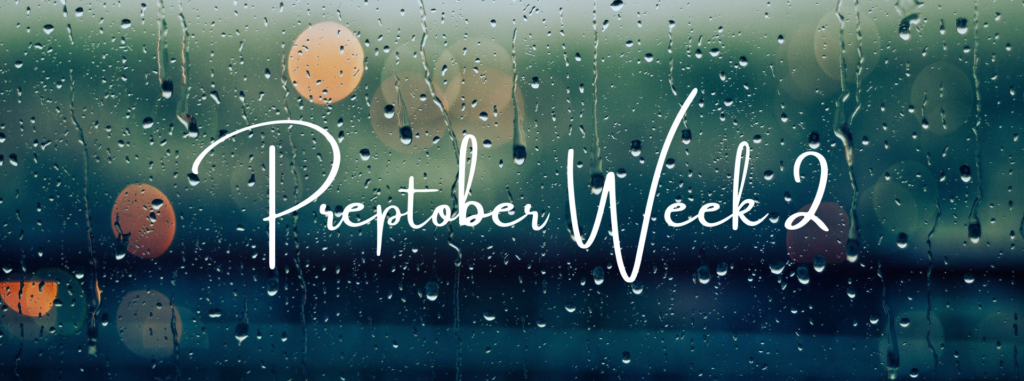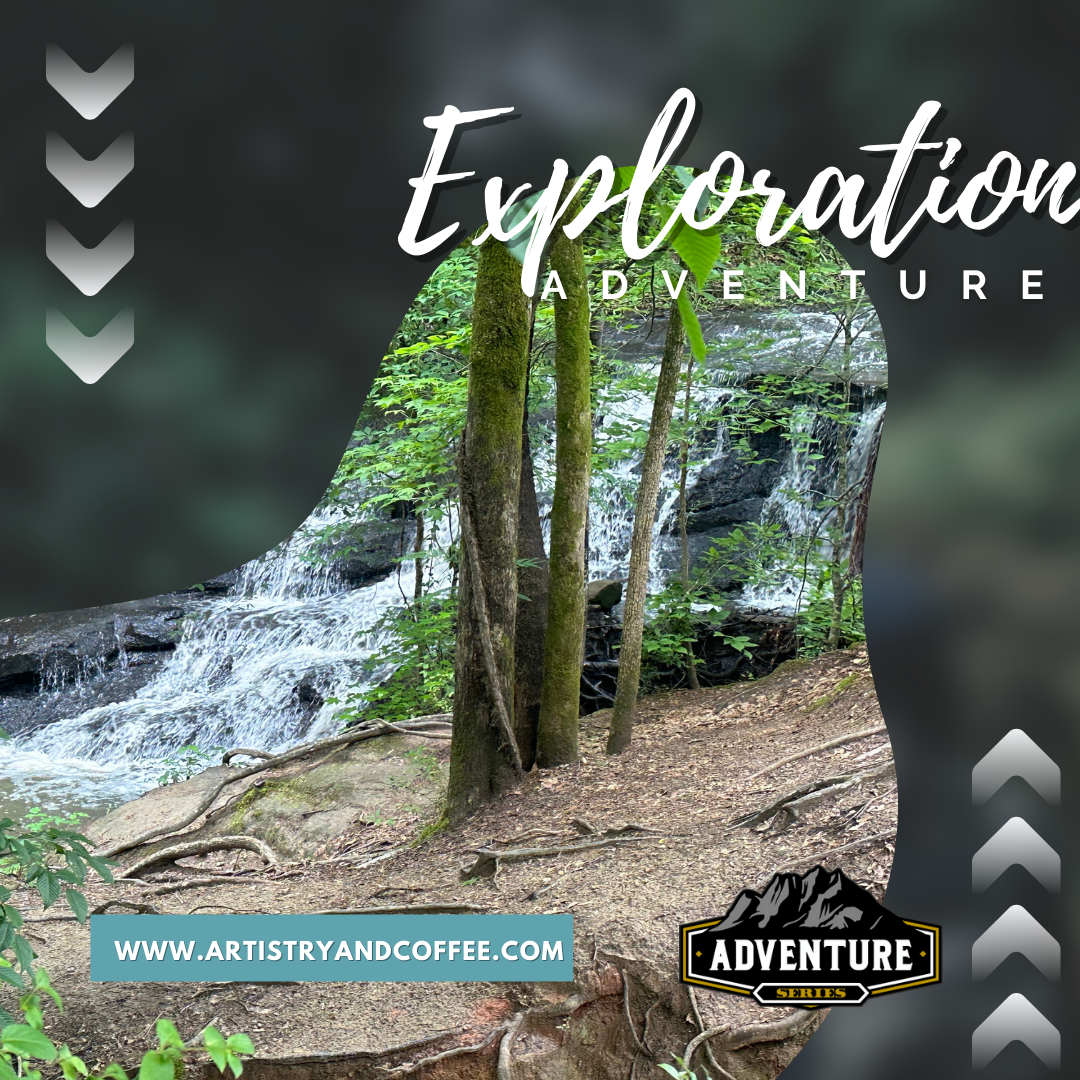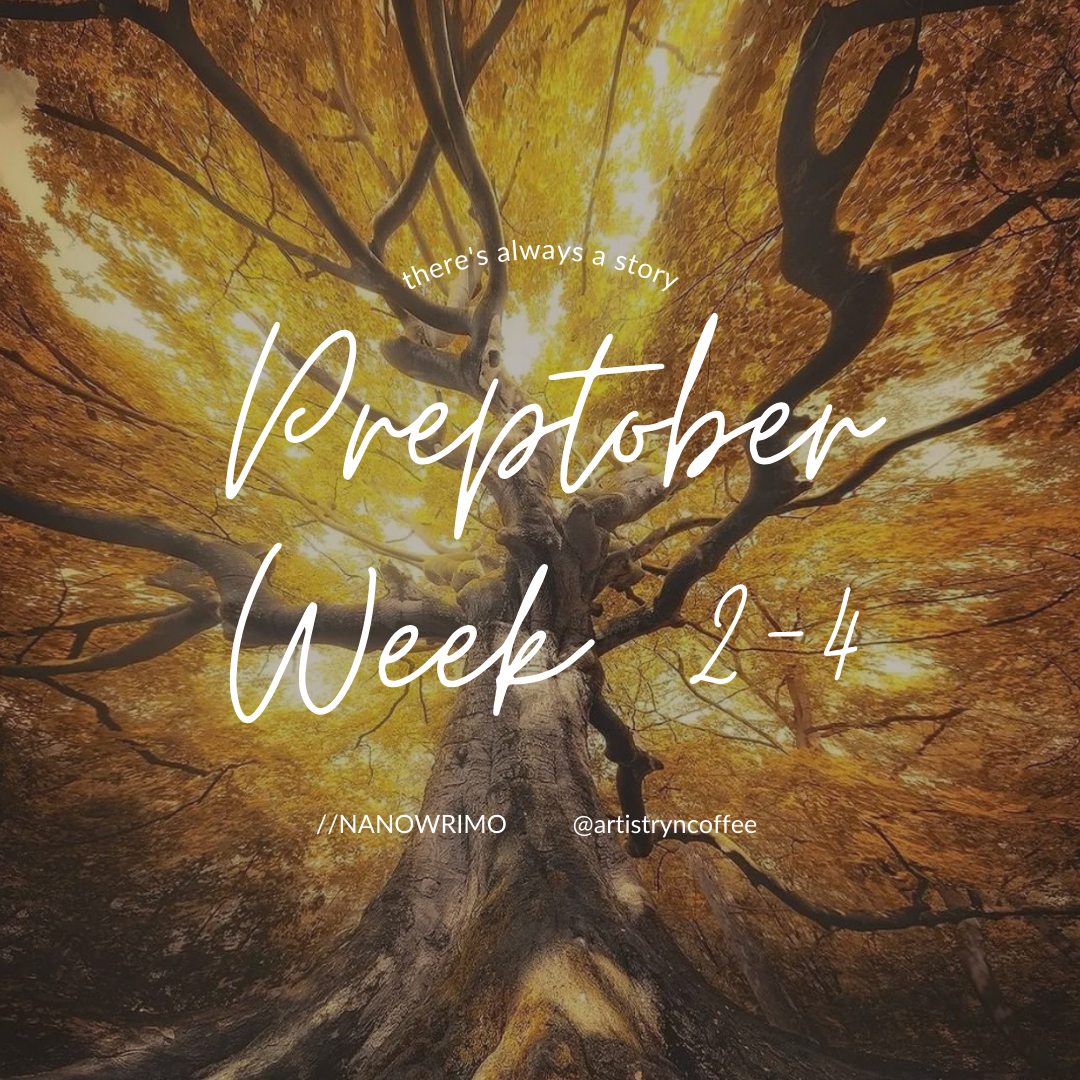Preptober: Week 2 – The Awakening
Woo hoo! You just completed Week 2 of Preptober!

Hopefully, you have made it through the slog of details that start to flood your mind when it comes to how your story is starting to take shape. The nebulous form is starting to become clearer in your mind, characters are starting to solidify, the scenery is starting to take form, and the events are taking shape.
It is about this time, that the feelings of being overwhelmed really start to take hold of me. I can sense the looming wave of detail that is hovering on the edge of my writing brain, waiting to slip in and drown me in minutiae that will distract me from my current goal. This is where newer writers start to awaken to the sheer depth of their craft, and also give them an appreciation for the effort that has gone into some of their favorite books.
This week was all about setting up your game plan for the month ahead, getting the bare-bones frameworks in place so that you can continue to expand on the different aspects of the story that you will eventually need to bring together to create the final product. It should all be building on the work and effort you put in last week as well.
After completing the activities in this section, you should have the following:
A list of Topics to research:
This list is very important, this should be the details that you need to nail down to bring a sense of realism to your story and make the actions and environment of your world more relatable to your audience. Once you have a list, don’t leave it for another day either, start working on each topic throughout the rest of this Preptober session so that you can clear that dependency from your path to creating your story.
What are some examples from your list? Here are some of my own for this session:
- Non-motorized means of transport and the nature of how that was successful.
- Animal behavior and abnormal traits in predatory species.
- Weather patterns that are specific to my setting’s geographic profile.
A clear vision of a breathtaking story setting
This is most important to yourself, it will help you to describe the small details, creating the same image in the mind of your readers, it will also help you to further immerse yourself into the story. I can picture myself walking down the same streets, interacting with some of the same people, and really getting a sense of the lives that your characters live. If you are artistic enough to draw or visually create your own setting, that is amazing and can serve as a concrete example of your world. Most people though look towards creating a map of their world, luckily there are some handy web-based options for those that don’t have the time or talent to draw these out from scratch. Check out Inkarnate for example.
Initial Development of Characters
Like all of the other tasks that you have worked on so far this month, this is only the beginning, getting a sense of who you want your characters to be is where you need to be at this stage. You don’t know all of the interesting aspects of their personalities and how they will interact with the world around them. That will come in time, right now you should be focusing on the core of the character, what is making them the driving force behind your story and how their own challenges fit into your broader narrative.
Brainstorm on how to get unstuck
When you get stuck during your writing and you will get stuck, what is your plan to get back on track? Are you going to attack a different aspect of the story-writing process, go for a run, cook something, watch a movie or read a book? There are many ways that can get your brain back on track to follow those creative pathways that are unfolding in your story. The one thing that I can guarantee is that whichever tactic you choose it should always come back to getting words on the page, otherwise it will more likely than not become just another distraction or temptation to procrastinate in doing what you need to be doing. Procrastination is not something you can allow in the NANOWRIMO process, you don’t have time for it.
Outline your Top Ten Scenes
Mapping out your scenes is a standard way to keep track of the numerous plot threads that will start appearing all over your story scape, starting with the basic framework will also help to create a more comprehensive story as you write. Don’t skimp on this step, really spend some time here because most of your challenges in making your story flow can be caught if you have a well-designed plan in place.
Plan to attend a Write-in session
This is a beneficial exercise for those that are struggling to get started, a write-in session will bring you closer to your local writing community as well as give you some additional eyes and ears on potential issues while you are working through your story. Networking with other writers will also be beneficial, especially if they are kind enough to commiserate on their own challenges, their struggles, and how they overcome them. I personally believe the organic interactions that you get from a physical write-in bring a significantly improved experience, though if you are still uncomfortable being around other people, the virtual option may be a better fit.
Clear visualization of how your successful November would appear
There is power in positivity, and you should take advantage of it when describing what your successful NANOWRIMO month would look like. How would you achieve and/or break your word count goals to produce the best, most compelling story that you have ever imagined? Take yourself through exercises where you perceive setbacks and periods of inability to write, visualizing how to overcome these situations and feelings will give you some practice for when the actual events occur. Professional athletes do this type of visualization all the time since it is when things go wrong that you need to continue to perform and push forward to reach your final goals. You are actively working out your mind to do something similar so why not take some inspiration and try it out in your own writing practices?
Where to go next?
As it really starts to sink in the level of the challenges you have chosen to overcome, you will start moving from this awakening period, and into the realization of what is needed to take yourself to the next level of skill in your craft and writing profession. Keep pushing yourself, don’t be satisfied with the surface level of the process, dig deeper and find what works for you so that you can really develop your story into something magnificent. After all, it doesn’t happen by accident, it takes effort and a lot of it.










Related Posts